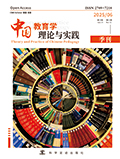

中考是初中生毕业考和高中入学选拔考试相结合的高利害的考试, 也是各地市教育局、县教育局、学校、校长、教师、学生和家长都非常重视的重大事件。中考对义务教育具有指挥棒的功效, 其试卷结构变化、试题创新和难度调整等变革, 都会显著影响中小学教育教学实践、教育评价改革、双减新政和新课程新课标的实施。基于新时代评价改革、双减新政、新课程新课标、拔尖人才培养等新背景, 依据测量学原理和一线教改实践, 从考试效应、试卷结构、试题创新三个方面为省级中考命题改革提出七点思考。一是提高测量学难度值, 助力双减新政实施; 二是减少全卷试题容量, 抑制题海战术训练; 三是采取素养模块布局, 示范核心素养教学; 四是调整试题来源结构, 保 障教学评一致性; 五是设置德体美劳情景题, 引领学校五育并举; 六是研发中考新型试题, 有效破解应试教育; 七是改良试题评分办法, 科学选拔拔尖人才。希望能给中考组织者、命题者和初中教师带来命题启发, 以便充分发挥中考命题的正确导向性和良好社会效应。
The exam of the junior high school entrance examination (JHSEE) is a high stakes examination which combines the graduation assessment for junior high students and the selection examination for high school enrollment, and is also a significant event to which education authorities, schools, principals, teachers, students, and parents in various cities and counties all attach great importance. The JHSEE serves as a guiding instrument for compulsory education, and changes in its paper structure, innovative questions, and difficulty adjustments significantly affect the teaching practice of primary and secondary education, education evaluation reform, the implementation of the new double-reduced policy and the new curriculum and new curriculum standards. Based on new background of evaluation reforms, the new policy of reducing academic burdens, new curricula and standards, and the cultivation of top talents, among other new contexts, and drawing on principles of measurement and frontline educational reform. practices, seven considerations are proposed for provincial-level JHSEE proposition reforms from three aspects: exam effects, paper structure, and innovative questions. Firstly, lowering the overall difficulty of the JHSEE to support the implementation of the policy of reducing academic burdens. Secondly, reducing the capacity of questions across the entire paper to inhibit rote learning tactics. Thirdly, adopting a competency-based module layout to demonstrate core competency teaching. Fourthly, adjusting the structure of question sources to ensure teaching evaluation consistency. Fifthly, setting scenario questions on physical education, aesthetics, and practical activities to promote holistic education in schools. Sixthly, developing new types of JHSEE questions to effectively address exam-oriented education. Seventhly, improving question scoring methods to scientifically select and cultivate top talents. It is hoped that these considerations will provide inspiration to JHSEE organizers, proposition makers, and junior high school teachers, so as to fully utilize the correct orientation and positive social effects of JHSEE propositions.